ADVANCED TESTING | PRECISE CUSTOMISATION
LabSat 4
LabSat 4
LabSat 4 is a powerful GNSS Record & Replay simulator that offers exceptional performance while maintaining the familiar LabSat benefits of being compact, portable, and highly cost-efficient.
It features multi-constellation and multi-frequency Record & Replay with up to 12-bit quantisation, 10–60 MHz variable bandwidth, and three individually configurable RF channels.
With the SatGen Simulation Software, you can create custom scenarios for simulated testing – and now these can also be streamed in real-time via LabSat 4 with a live time/date.
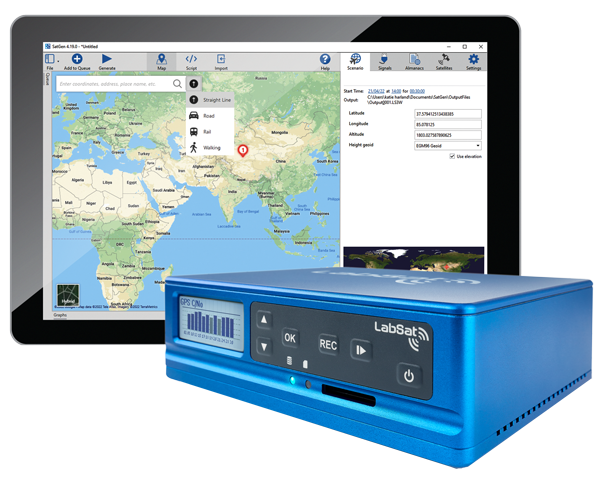
Features

Performance
Simultaneously record up to 3 GNSS channels, each with a 10-60 MHz variable bandwidth and up to 12-bit quantization.

Multi-Constellation & Multi-frequency
Record & Replay all GNSS signals in the Upper and Lower L-Band, including SBAS and Commercial differential services.

Multi-System Synchronisation
Tightly synchronise the Record & Replay of two LabSat 4 systems, ideal for dual antenna testing.

Real-time Simulation with SatGen
Live multi-frequency RF simulation, with user defined static, dynamic and orbital scenarios
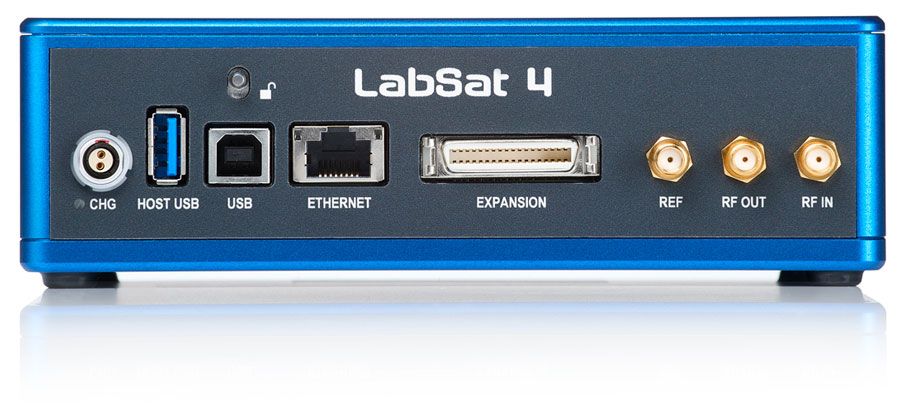

API Available
Use API and Ethernet connectivity to automate test programmes, deliver global testing from a centralised point, and seamlessly integrate with wider test set-ups.

Additional Signals
Record a range of additional signals synchronised to the GNSS input, such as dual-CAN, CAN-FD, RS232, and digital signals.*

Conducted or Radiated Testing
Test a device with an internal antenna via radiated testing or a device with an external RF connection using conducted testing.
High Speed Data Transfer
Efficient file management is delivered via high-speed data transfer to and from the 7.6 TB internal storage via Gigabit Ethernet and USB 3.
Which LabSat 4 is right for you?
LabSat 4 is available in three models: LabSat 4 Lite, LabSat 4 Core, and LabSat 4. As your testing needs evolve, so can LabSat 4. Upgrades are available from LabSat 4 Lite to LabSat 4 Core, and from LabSat 4 Core to LabSat 4, ensuring a seamless transition to more advanced capabilities.
3 RF channels
10-60 MHz bandwidth
Up to 2 bits of I&Q
External signals
3 RF channels
10-60 MHz bandwidth
Up to 4 bits of I&Q
External signals
3 RF channels
10-60 MHz bandwidth
Up to 12 bits of I&Q
External signals
All three models are able to replay legacy LabSat 3 Wideband scenarios.
Options
Record & Replay
Capture live-sky GNSS signals and build a library of real-world scenarios for playback on any LabSat 4. A perfect all-in-one solution for comprehensive GNSS testing.
Replay Only
Ideal for bench testing and production lines, this model allows you to replay pre-recorded or simulated scenarios without the need for live-sky recording.
SatGen Compatibility
All models work with SatGen Simulation Software, enabling the creation of custom GNSS scenarios for precise and repeatable testing.
Why use LabSat?
Realistic, Reliable & Repeatable Testing
Reliable
The use of LabSat 4 Record & Replay is a great way to understand, test and validate the real-world operation of GNSS devices without the need for costly, repetitive live-sky field testing. It is a reliable solution for product development, performance testing and benchmarking, and production line testing.

Repeatable
Real-world, live-sky GNSS signals can be recorded once on location and then replayed over and over for accurate, consistent testing indoors. The recording can capture a scenario to test a specific product feature, or represent the wider use of a how and where a product will be used.

Realistic
Recording captures realistic high-resolution scenarios including challenging conditions such as low signal strength, multipath effects, interference, and spoofing attacks. This enables testing and optimization of PNT devices for resilience and reliability under adverse conditions, eliminating the need for physical replication.

Ease of Use Anywhere
Ease of Use
Using a LabSat requires no special training. It has been designed for ease of use with simple navigation on the unit and an intuitive web interface for test configurations.

Compact Size
LabSat simulators are small, portable and battery powered, making them ideal for live-sky recording in any conditions. Its small size allows LabSat to fit into the most compact of spaces for recording on the move, and if being used as part of a wider test set-up, it fits easily into any standard rack mount.

Plug and Play
LabSat 4 is supplied with a selection of sample scenario recordings so that testing can start straight out of the box.
The one touch Record & Replay user interface means recording starts and stops with the press of a button.
Cost-effective
Budget-friendly
Using recorded GNSS data for testing reduces the need for repetitive field-testing and saves both time and costs. LabSat was born out of a need for an easy to use and cost-effective GNSS simulator and over 25 years later, it maintains not only its ease of use, but also its highly competitive pricing.

Free Lifetime Support
All LabSat owners benefit from exceptional customer support that is provided free of charge with no support contracts. All future firmware and software updates are also provided for free so that owners continue to have access to all the latest features and upgrades.

Shared Working
LabSat is ideal for modern working including multi-location, global offices and remote working. When recording, LabSat is robust enough to be moved between test locations and, for replay, can simply be passed between engineers or test benches. Additionally, it is easy to share recorded scenarios for replay on another LabSat.
GNSS Testing for all Industry Applications

AEROSPACE & DRONE GNSS TESTING – With Direct Flights Departing from Your Desk
Create custom scenario trajectories to test take-off, flight path and landing.
Create high-dynamic scenarios for drone, aircraft and UAV testing.
Record & Replay signals from all constellations, including restricted signals with encrypted coding, making LabSat ideal for military level applications.

AUTOMOTIVE & AV GNSS TESTING – Driving Accuracy at Every Turn
Record and synchronise CAN bus, CAN FD and RTK drive data for automotive, autonomous and fleet testing.
For V2X systems, braking and signalling information can be recorded and replayed alongside GNSS signals.
Use SatGen to generate a GNSS scenario of a route for repeatable testing of a vehicle or ADAS system in any location.
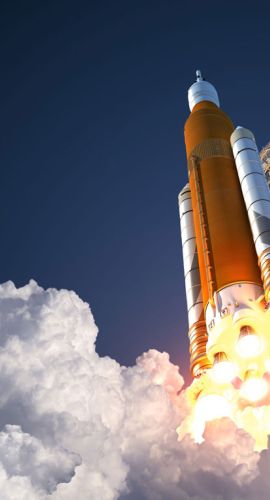
SPACE – GNSS Testing for when the sky is not your limit
Create custom scenarios with trajectories to test launch, in-orbit and re-entry manoeuvres.
Follow the True Horizon with a dynamically changing elevation mask.
SatGen, is not limited to the standard GNSS receiver restrictions of 1000 knots and/or 18,000 m, making it an ideal to test ‘space qualified’ receivers.
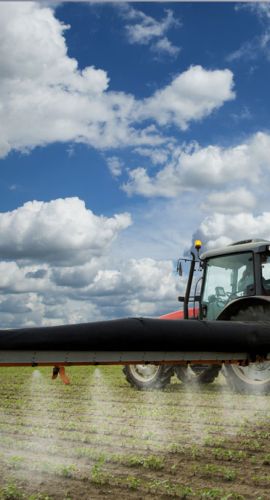
AGRICULTURE – Precision GNSS testing for any field of smart agriculture
Develop autonomous vehicles and machinery with repeatable testing.
Synchronise the recording of additional data, including CAN bus/CAN FD signals and RTK base station corrections, utilised in autonomous and precision agriculture vehicles.
Create bespoke scenarios to test performance and features such as geofencing and drone flight paths.

IOT – Precision GNSS testing for the connected world
LabSat 4 offers an easy to use plug and play solution for both development and production line testing and straight forward integration into wider test set-ups.
Use in combination with SatGen Simulation Software to complete realistic test programmes with the upmost flexibility.
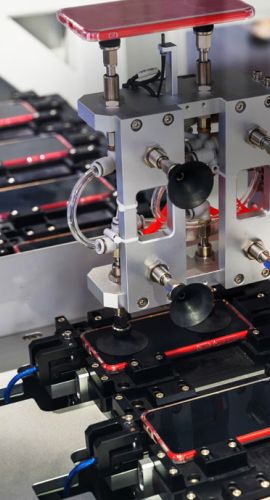
EOL – Cost effective and reliable production line and EOL testing
LabSat is a plug and play standalone solution and is easily integrated into custom test set-ups.
API and Ethernet connectivity allows for automated test programmes that deliver global testing from a centralised point.
Features in detail

Performance
LabSat 4 has 3 RF channels that can be individually customized. Each channel can be set with up to 12-bits I & Q quantization with intermediate setting choices of 1, 2, 4, 8 and 12 bits. The bandwidth is also variable and can be set from 10 - 60 MHz.
These performance settings comfortably capture almost any combination of GNSS signals simultaneously, whilst ensuring the efficient use of recording resources and file management.
For increased efficiency, custom record settings can be saved and quickly selected for future recordings.
High-Speed Data Transfer
LabSat 4 offers efficient file management via high-speed data transfer to and from the 7.6 TB internal storage via Gigabit Ethernet and USB 3.
This makes it easy to download recorded scenarios when conducting live-sky recording in the field. Additionally, it is quick to upload recorded or simulated scenarios ready for replay.

Conducted or Radiated Testing
✔ Conducted Testing – Directly connect the LabSat RF output to a device with an external antenna connection for precise, interference-free signal testing.
✔ Radiated Testing – For devices with internal antennas, connect an active or passive GNSS antenna to the LabSat RF output to wirelessly transmit the signal over short distances.
✔ RF-Screened Testing – Prevent interference with live signals by using a shielded RF environment, such as a fully screened RF room or a LabSat Test Enclosure, ideal for wearables, smartphones, and fitness trackers without external antenna ports.

Additional Signals
LabSat 4 (and LabSat 4 Core) can record a range of additional signals, synchronised to the GNSS input, including dual-CAN, CAN-FD, RS232, digital inputs and correction signals such as DGNSS and RTK.
Simultaneously capturing additional signals can increase the level of playback realism and allows for a wider range of testing.
NMEA data is also accessible via USB from the built-in GNSS receiver.
A Video VBOX can be used in combination with LabSat to record video of the test route. This helps to identify the effect of external conditions on your device, such as why exactly was there a drop-out or multi-path reflection at a particular point in the test, and what caused it.

API available
LabSat’s Application Programming Interface (API) provides control and testing automation that allows test scenarios to be programmed to automatically repeat or play in a set order. This improves efficiency with significant testing programs able to be run continuously, without the need for human supervision.
Additionally, the use of the Ethernet connection allows for centralised control of the API, enabling testing at global production facilities to be controlled remotely from a central office. This combination can significantly increase consistency in testing and reduce the scope for user error.

Multi-Constellation & Multi-Frequency
LabSat 4 is engineered to capture and simulate GNSS signals within the upper and lower L-band, as well as the S-Band. LabSat 4 can Record & Replay the following signals:
- GPS L1, L2, L5
- Galileo E1, E5a/b, E6
- GLONASS G1, G2, G3
- BeiDou B1, B2a/b, B3
- QZSS L1, L2, L5, L6
- NavIC L1, L5, S-Band
- SBAS L1, L5
- Pulsar X1, X5
Further signals can be configured with the Web Interface. Bespoke requirements like Iridium & Sirius XM radio frequencies are available on request.

Multi-System Synchronisation
With LabSat 4 Multi-Sync, you can synchronise both the recording and replay of scenarios across two LabSat 4 units with extreme precision. This ensures accurate and repeatable testing for dual-antenna applications, where maintaining exact timing between signals is crucial.
To achieve this high level of synchronisation, simply connect both units using the Dual Sync Cable, allowing you to record and replay tightly synchronised GNSS scenarios with confidence.
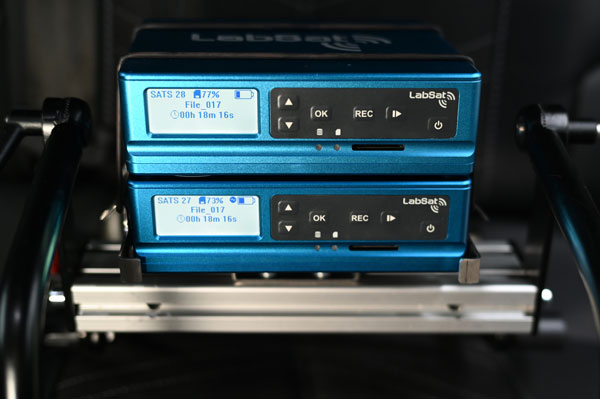
Manual Gain Control
This feature is particularly useful when comparing the performance of different antennas or replicating passive antenna conditions during testing.
By default, LabSat 4’s Automatic Gain Control (AGC) dynamically adjusts internal gain to optimize recording quality. While this provides a flexible and user-friendly experience, it also normalizes signal power, making differences between channels less distinguishable.
With Manual Gain Mode, you can disable AGC and set a fixed input gain to a user-specified level. This allows for accurate reproduction of power level variations in recordings and maintains correct relative power levels between channels, making it ideal for applications where signal fidelity is crucial—such as antenna testing and GNSS interference analysis.

User-friendly Interface
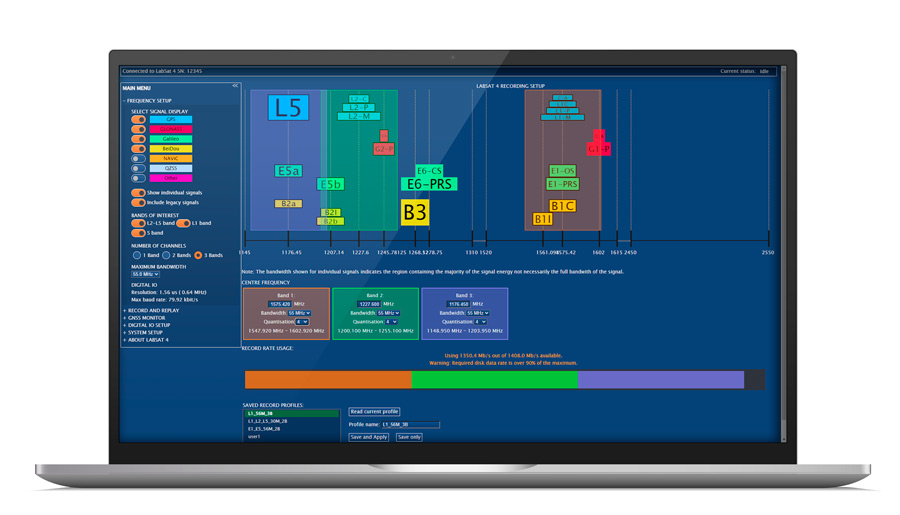 LabSat 4 offers a user-friendly, web interface that is fully accessible through most web browsers. This interface allows complete access and control over the device, enabling recording settings to be customised to meet specific needs.
LabSat 4 offers a user-friendly, web interface that is fully accessible through most web browsers. This interface allows complete access and control over the device, enabling recording settings to be customised to meet specific needs.
The scenario library stored on the internal SSD can be organised and managed via the web interface. It offers the flexibility to select and replay files with full command over the attenuation levels for each scenario.
The interface’s customisation extends to each RF channel, both in the pre-record phase and during replay, providing the ability to adjust critical settings such as quantization, centre frequency, bandwidth, and sampling rate.
This level of control ensures precise configuration of the record profile for each available channel, making LabSat 4 an ideal solution for a wide range of GNSS testing and simulation requirements.
Product Specifications
| Constellations | GPS L1, L2, L5; Galileo E1, E5a/b, E6; GLONASS G1, G2, G3; BeiDou B1, B2a/b, B3; QZSS L1, L2, L5, L6; NavIC L1, L5, S-Band; SBAS L1, L5; Pulsar X1, X5. Further signals in the upper and lower L band as well as the S band can be configured with the web interface. Bespoke requirements like Iridium & Sirius XM radio frequencies are available on request. |
| Nominal Output Signal Level | -93dBm/MHz @ 0dB Variable attenuator provides between +20 dB and –69 dB of adjustment during replay |
| RF Channels | 3 |
| RF Channel Centre Frequencies | Selectable |
| Number of Satellites Observed | All in view |
| Bandwidth | Variable 10 - 60 MHz per channel |
| Sampling Frequency | Automatically adjusted to suit Bandwidth 10 – 61 MHz |
| Quantisation | 1, 2 bits I&Q (LabSat 4 Lite) 1, 2, 4 bits I&Q (LabSat 4 Core) 1, 2, 4, 8, 12 bits I&Q (LabSat 4) |
| Data Format | I & Q |
| Additional Logging | 2x CAN channels, 4x Digital channels, 1x RS232 channel, 1x CAN-FD (Not available for LabSat 4 Lite) |
| User Defined Simulation Capability | Yes, through optional Simulation Software license. |
| Storage | 7.68 TB Solid State Drive (SSD), Removable Battery Pack 8 GB SD Card (for firmware upgrades only) |
| Data Transfer | High-speed data transfer to and from SSD via Gigabit Ethernet |
| Active Antenna Voltage Supply | 4 - 4.5 V |
| Reference Oscillator | OCXO, Temperature Stability ± 0.05 ppm, Frequency Stability ± 0.3 ppm over first year TCXO, Temperature Stability ± 0.05 ppm, Frequency Stability ± 1 ppm over first year |
| Operating Voltage | 8 V to 30 V DC |
| Operating Temperature | 50°C ambient |
| Size | 137 mm x 167 mm x 52 mm |
| Weight | 1.45 kg with battery and SSD |
Accessories
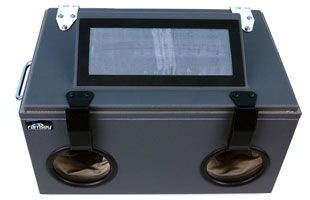
LabSat GNSS Test Enclosure
RF shielded enclosure suitable for testing GNSS devices with internal antenna.
Dipole antenna (RLACS219) included.
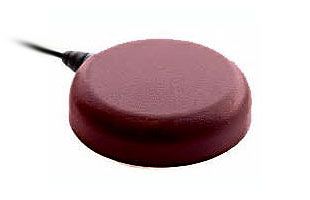
Passive Rebroadcast Antenna
A passive antenna suitable for replaying GPS L1/L2/L5, GLONASS G1/G2/G3, BeiDou B1/B2, Galileo E1/E5a+b & L-band corrections signals.
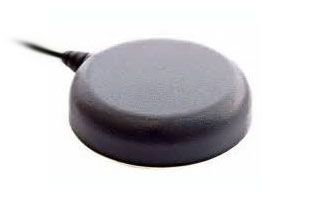
LabSat 4 Replacement Active Antenna
An active antenna suitable for recording GPS L1/L2/L5, GLONASS G1/G2/G3, BeiDou B1/B2, Galileo E1/E5a+b & L-band corrections signal.
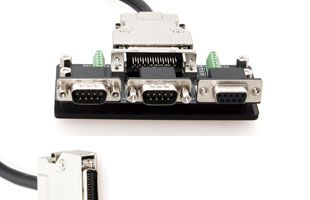
LabSat Locking Expansion Connector
Allows for RS232, CAN, CAN-FD and digital signals to be recorded/ replayed at the same time as GNSS RF data.
Ensures that a secure lock is achieved during recording in challenging environments.
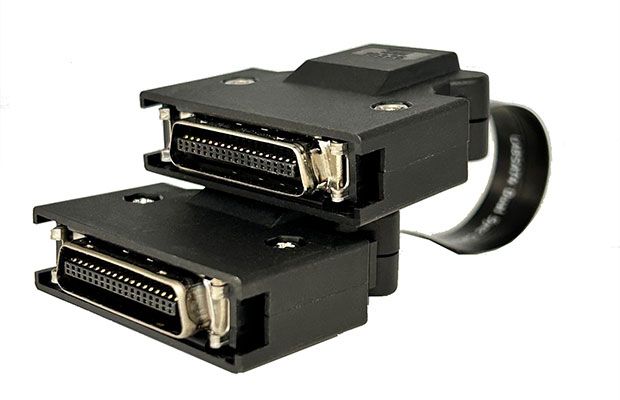
LabSat 4 Dual Sync Cable
Connects two LabSat 4 units for synchronized recording and replay.
